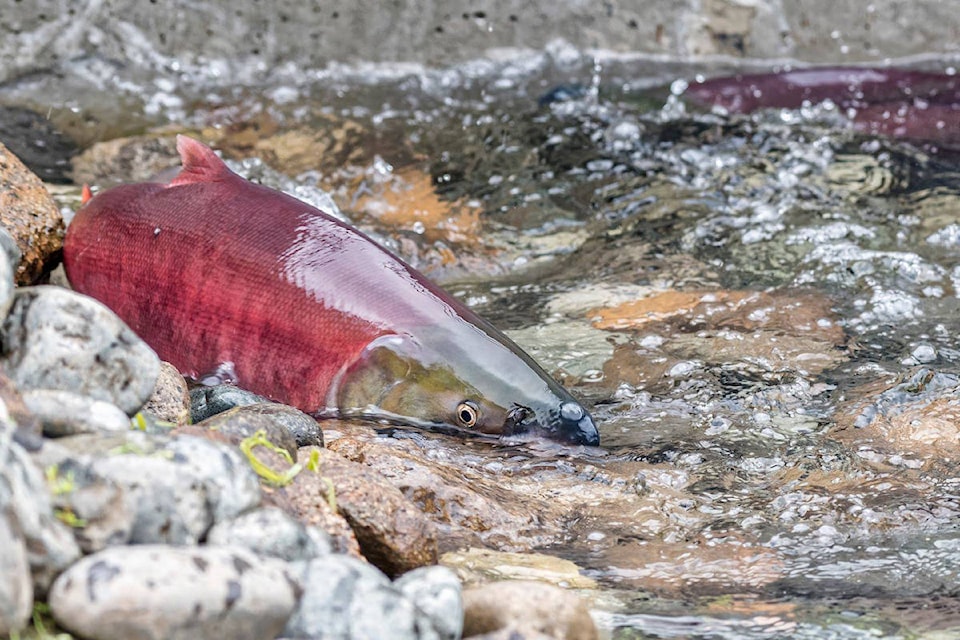I have the location, time and date of the next Annual General Meeting for the Horsefly River Roundtable, but before I tell you all this, I need to explain why I even bother to be involved in saving our watershed so our fish species such as sockeye, chinook and coho as well as our famous Quesnel Lake rainbow trout will be here for my great grandchildren of which I have four now to enjoy as I have. This, even though my fishing days are over.
My grandfather, R.W.. McLeod became superintendent of the lower Fraser River in 1923, and continued in that position until his retirement in 1946. This was after he retired from the North West Mounted Police after 25 years service. At the time of his death in 1951 he was considered to be the foremost authority on salmon in B.C.
After returning from overseas in 1945, my father enrolled at UBC, receiving his bachelor of arts in zoology and biology.
During summer breaks he worked for the International Pacific Salmon Fisheries commission at various locations, and in 1947, with American biologist Jim Mason, he explored the Cariboo area including every creek and river flowing into Quesnel Lake and eventually choosing the present location of the Horsefly Lake Provincial Campground for the Quesnel Station, commonly referred to as the Horsefly hatchery.
Read More: COLUMN: Forests in Horsefly watershed targeted for harvest
Our family moved to Horsefly Lake in 1949 when my father became superintendent for the Quesnel Station.
To an eight-year-old kid, being able to watch the eggs grow eyes, alevin form, and fry emerge on a daily basis checking the elevated troughs with constant running cold water from Horsefly Lake and then see them being transferred to ponds built in 1948 by Texas Fosbery, and in the fall watching them being flown by Beaver seaplane in 15,000 fish lots to be released into the Adams River.
To me this was a miracle of untold proportion, and then these same fish came right back to the hatchery and the experiment failed. No fish returned to the Adams; any that returned came right back to the hatchery and the Little Horsefly River. My father resigned in 1953 and built a service station in Horsefly.
Later on in life I became a fisherman and fished the west coast of Vancouver Island and caught a few of the 1977 Horsefly sockeye; over 600 per day for three days before the DFO closed the fishery for sockeye.
Salmon, sockeye in particular, are almost part of my DNA, so that’s why I put myself out here in public to sink or swim on your approval as it were. In closing I will say this; in 1913, the year the CPR caused the Hell’s Gate blockage there was the largest salmon run ever recorded, 35 million strong, 25 million went to the fishermen and 10,000 fish died at Hell’s Gate littering the banks of the Fraser for miles. Not one fish made it past the Gate.
Our sockeye have survived insurmountable odds just to still come back every four years to live out their life cycle. They deserve our respect and help.
Read More: Sockeye salmon return in droves to Quesnel Lake watershed
Now if you are interested at all in becoming a member of the Horsefly River Roundtable, membership is $5 annually.
The meeting will be held at the Horsefly Seniors and Wellness Society at the fire hall location at 3055 Boswell Street across from the museum at 7 p.m. April 11, 2019.
The watershed needs you.
Do you have a comment about this story? email:
editor@wltribune.com
Like us on Facebook and follow us on Twitter.
Bruce MacLeod was a longtime Horsefly resident who now lives in Williams Lake.
He has been an active member and spokesperson for the Horsefly River Roundtable for years as well as Horsefly correspondent for the Williams Lake Tribune.
